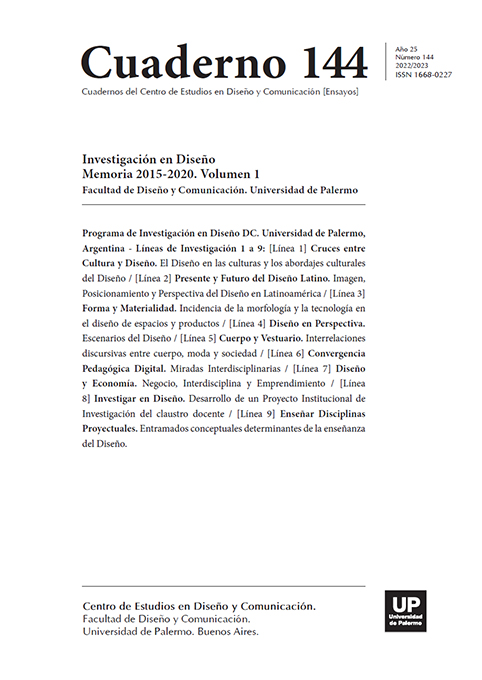Perspectivas del Diseño: El Diseño en nuevos escenarios disciplinares
Abstract
Research Project 4.1 presents the inclusion of Design for Transition, proposed by Carnegie Mellon University at the graduate level, in the curriculum of the UP Design Management Master, which has been allowing to promote a comprehensive and responsible view of design in our students, tending to wonder about the practices learned and professionals installed in the field, considering it from a systemic perspective, which reviews its contextual scenarios in all its dimensions and layers of incidence, focusing on the sustainable relationship between Society-Economy-Environment, from a reflective assessment of design and the designer as an agent of change that brings into play the concepts and challenges of this new emerging field of design. Fundamental change at every level of our society is needed to address the issues confronting us in the 21st century. Climate change, loss of biodiversity, forced migration, depletion of natural resources, and the widening gap between the rich and the por are just a few of the “wicked problems” that require new approaches to problem solving. Transition Design or “design for transition” brings together two powerful memes: (a) the idea that entire societies will need to transition toward sustainable futures, and (b) the realization that this will involve systems-level change informed by a deep understanding of the anatomy and dynamics of complex systems. This emerging field of “transition studies” now encompasses a community of international researchers from the areas of social and management sciences, engineering, activism, and related disciplines. However, contributions from the field of design and its related sub-disciplines are still relatively rare, and Transition Design seeks to address this gap. This is surprising given the degree to which design permeates socio-technical systems and is implicated in most of the wicked problems previously mentioned. This ubiquity, along with the evolution of design in recent decades to become a highly integrative discipline, positions design and designers as potentially powerful leverage points for positive systems-level change.
References
.
Los autores/as que publiquen en esta revista ceden los derechos de autor y de publicación a "Cuadernos del Centro de Estudios de Diseño y Comunicación", Aceptando el registro de su trabajo bajo una licencia de atribución de Creative Commons, que permite a terceros utilizar lo publicado siempre que de el crédito pertinente a los autores y a esta revista.


